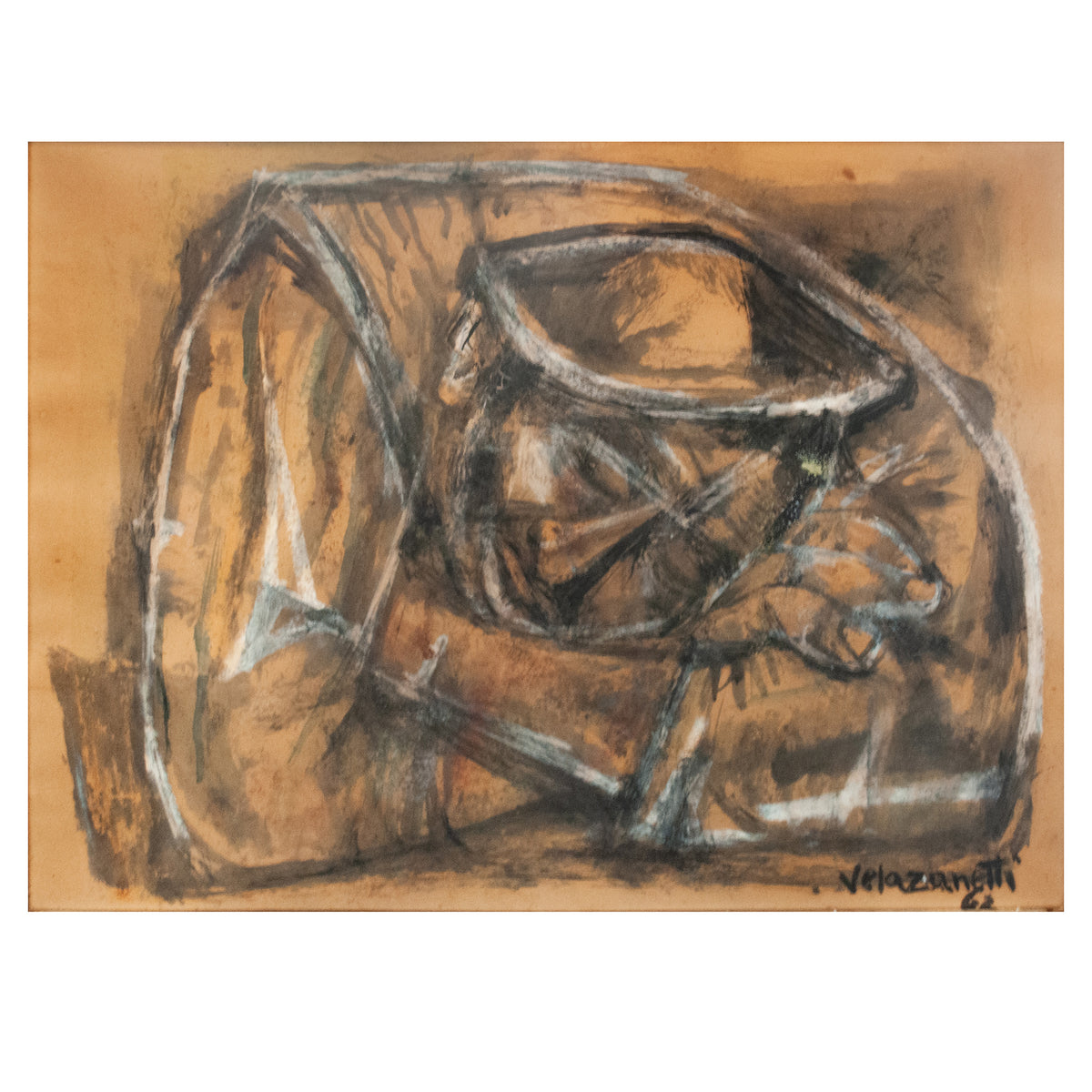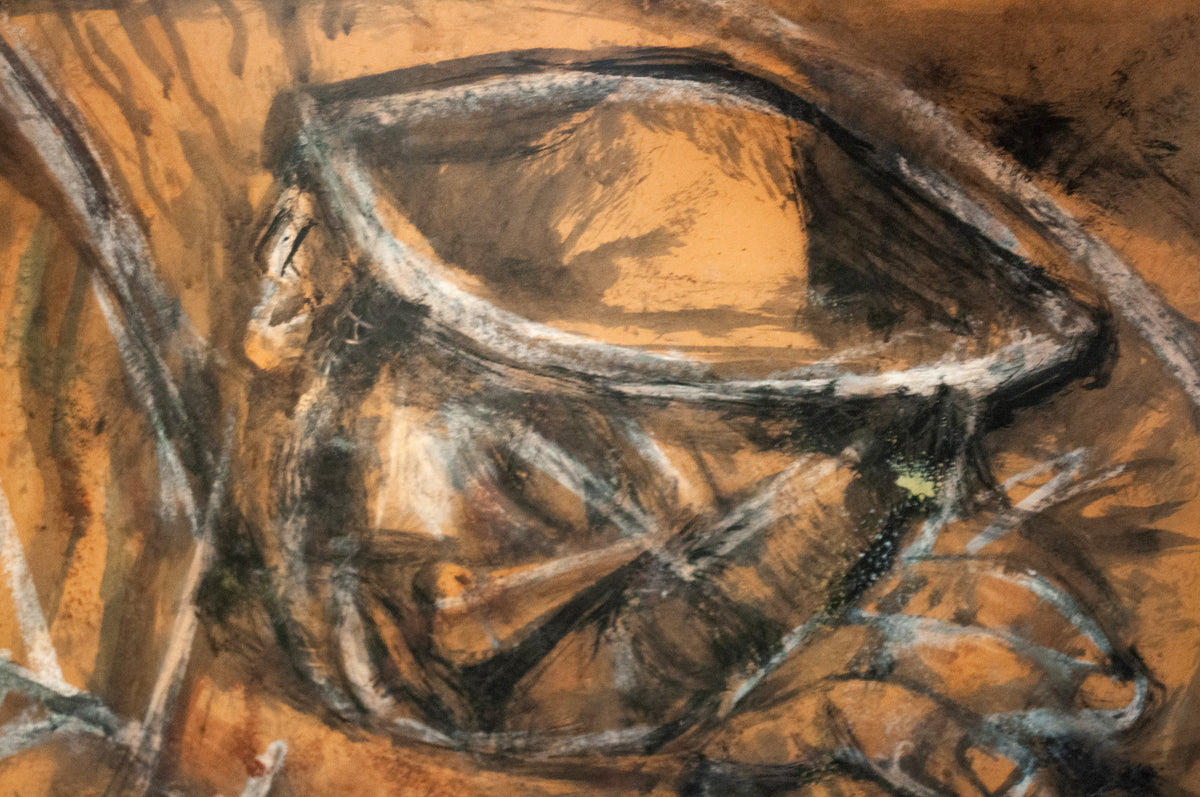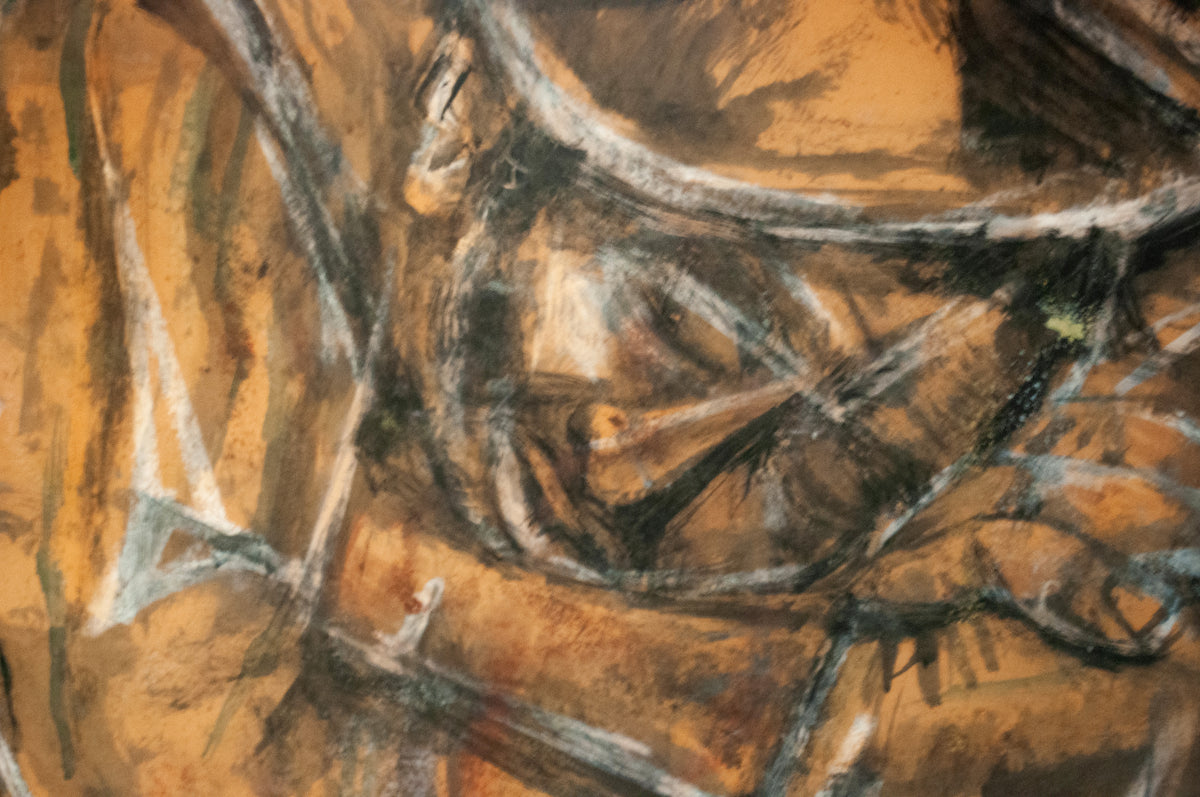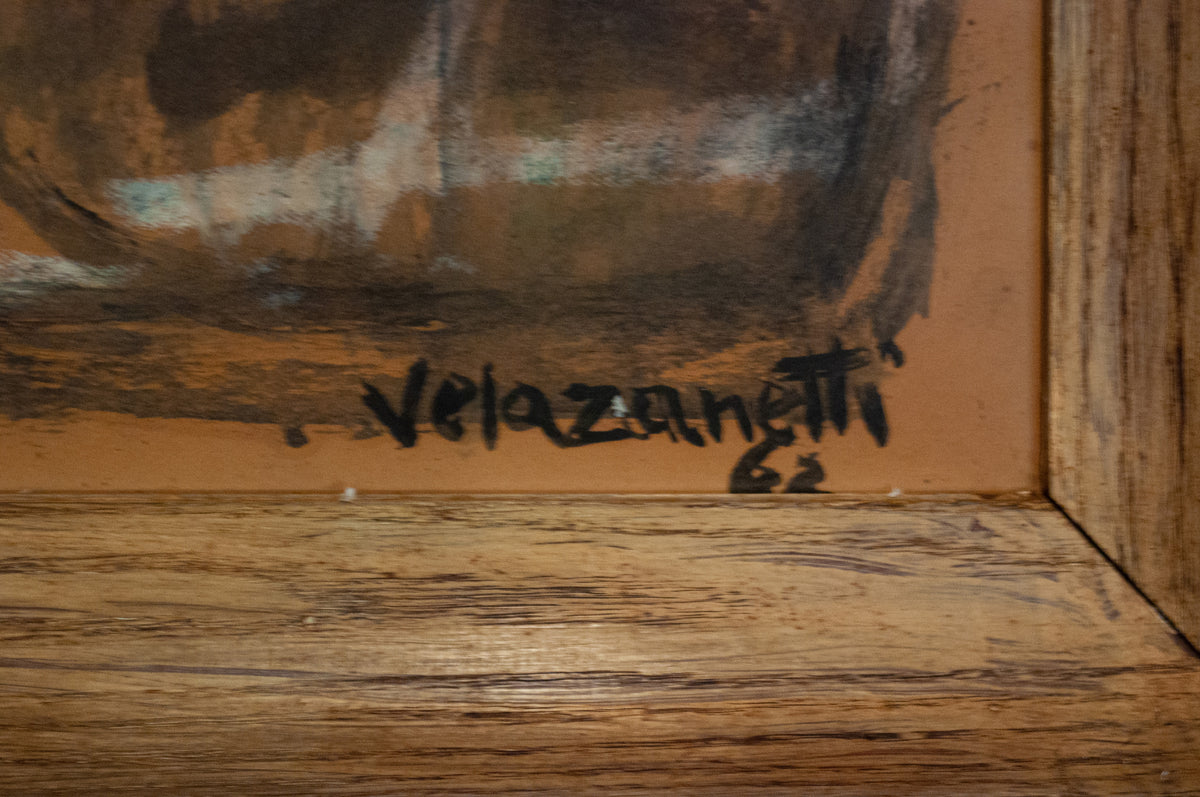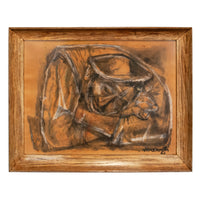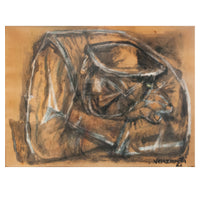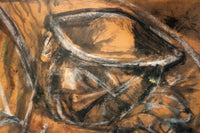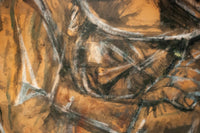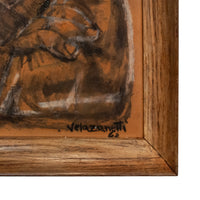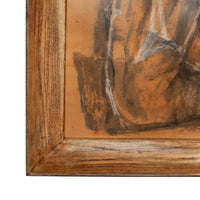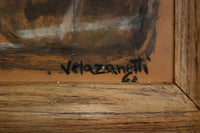Spanish Dominican Republic Mexico Realist Gouache Painting Portrait by José Vela Zanetti, 1962
- Regular
- $ 3,700
- Sale
- $ 3,700
- Regular
- Unit Price
- per
An important Spanish portrait painting by the celebrated artist Jose Vela Zanetti (1913-1999), signed & dated 1962.
This painting by one of Spain's most celebrated muralists, who also painted both the Realist & Expressionistic styles, deeply affected by the Spanish Civil war and the loss of his father under the Franco regime. Zanetti painted humanist scenes with an insightful observation for the subtleties that make us human; local people & scenes of rural & city life.
This painting done in gouache, watercolor, charcoal & chalk, depicts a Spanish peasant worker asleep, with his head in his crossed arms, the painting is signed and dated lower right "Vela Zanetti 62". The painting is housed in the original oak frame, housed under non-reflective UV glass, the painting is in excellent condition and is ready to hang on your wall.
José Vela Zanetti was born in Milagros, a small town in Burgos, in 1913. He soon moved to León, where his father, Nicostrato, works as a veterinarian. Nicostrato Vela Esteban had a decisive influence on the life of his son since he did not oppose his artistic concerns but on the contrary gave him facilities to develop them.
At the age of seventeen he made his first trip to Madrid promoted by his father to see exhibitions and visit the Prado Museum which was definitive to consolidate his vocation as a painter. It is on this visit that he meets the critic and historian Bartolomé Cossio, the rediscoverer of El Greco and of the first people that he trusted in his possibilities. He was in charge of introducing him to the history of Spanish art as well as introducing him to mural painting. He also put him in contact with the painter and educator José Ramón Zaragoza in whose workshop he entered.
In the early 1930s he held his first exhibitions in Leon and received his first mural commission from the house of state in that same city.
In 1933 he received a grant from the Leonese County Council to travel to Florence a city where he ended up residing and which gave him the opportunity to see the great murals of the Renaissance. In it he studied the monumentalism of Mantegna and Piero della Francesca's painting.
At the outbreak of the Civil War (1936-1939) he returned to Spain from Lisbon and enlisted in the Republican army. In 1939 he went into exile to Santo Domingo (Dominican Republic) where he lived off wall painting for almost two years while continuing to forge his role as a muralist. He decorated various official buildings and palaces.
Between 1947 and 1949 he made his largest mural ensemble in the church of San Cristóbal. A work that was recognized with the granting of the John Simón Guggenheim scholarship in 1950. This same year he made the mural of his most universal work “The Freedom Route ”At the ONU headquarters in New York. Work conceived with the intention of condemning the Nazi holocaust and that ended up being a vindication of peace in the face of racism and violence.
At the end of the fifties he moved to Mexico where he painted some masterpieces like the one he made in the Palacio de Don Juan Manuel and established a solid friendship with the muralist Rufino Tamayo. After finishing his American experience, he made another trip to Florence before settling in his hometown.
In this new stage of his artistic life he retakes easel painting without abandoning mural art and exhibits repeatedly in Burgos, León, Madrid, Valladolid, Valencia and Alicante. Highlighting above all the exhibition he holds at the Círculo de Bellas Arts in 1963 for which he will be recognized with the Eugenio D'Ors Medal for the best exhibition of the year.
From 1976 to 1980 he installed his studio in Olmeda. In 1985 he was appointed a member of the Real Academia de San Fernando in Madrid. In 1987 he constituted the board of the Vela Zanetti Foundation in León where a very significant sample of his work is collected.
Vela Zanetti has left as a legacy the unique painting of him that shows us his way of seeing the world. A world full of faces of castilian peasants, of hands described to perfection, Apostles, sincere-faced religious, medieval characters, mirror Indians of 20 years of painful exile ...
He passed away in January 1999 in Burgos, leaving behind a beautiful and prolific body of work spread throughout the world, both in fine art museums & private collections.
Dimensions at sight are 24" in width and 18" in height.
Imperial
ches high × ches wide × ches deep
Metric
high × wide x deep
Displayed rates are for shipping in the Continental U.S. and Canada. For other locations, kindly contact us and we will provide the most competitive shipping price available. All shipments are professionally packed and shipped insured with full tracking capabilities. Customers are also welcome to collect their items from our warehouses or arrange their own shipping.


